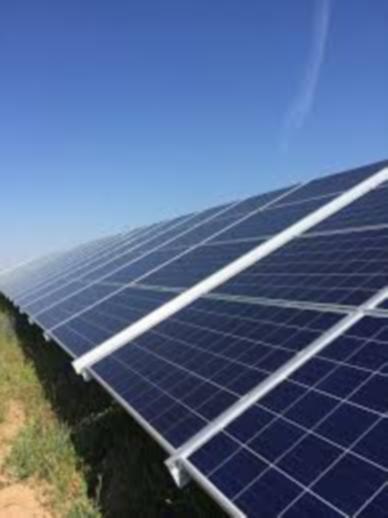President-elect Donald Trump has repeatedly called for Mexico to build a wall between our countries. There is indeed a way that Mexico could create a barrier between the U.S. and Mexico, one constructed exclusively on the Mexican side, with substantial benefits for both countries and the planet: a solar border.
Sunlight in the northern deserts of Mexico is more intense than in the U.S. Southwest because of the lower latitude and more favorable cloud patterns. And construction and maintenance costs for solar plants in Mexico are substantially lower. Thus, building a long series of such plants all along the Mexican side of the border could power cities on both sides faster and more cheaply than similar arrays built north of the border.
Solar energy is already being generated at lower prices than those of coal. With solar plants along vast stretches of the almost 2,000-mile U.S.-Mexico border on the Mexican side, a new high-voltage direct-current (HVDC) grid could be set up to transmit energy efficiently from that long, snaking array to population centers along the border. HVDC power lines lose exponentially less energy over long distances than traditional power lines. Cities that could immediately benefit include San Diego, Tijuana, Mexicali, Tucson, Phoenix, El Paso, Ciudad Juarez, San Antonio and Monterrey.
If one were to construct the equivalent of a strip of arrays one-third the width of a football field south of the entire U.S.-Mexico border, wider in some areas and narrower in others, with a wide berth allowed for populated areas and stretches of rugged terrain, sufficient energy might be produced to also supply Los Angeles, Las Vegas, Albuquerque, Dallas and Houston. For the U.S. cities, it would be a way to obtain cheaper and cleaner energy than they can from other sources.
The solar border would have a civilizing effect in a dangerous area.
A solar border would alleviate a range of binational problems. For one, it would have a civilizing effect in a dangerous area. Since solar plants use security measures to keep intruders out, the solar border would serve as a de facto virtual fence, reducing porousness of the border while producing major economic, environmental and security benefits on both sides. It would make trafficking drugs, arms and people all the more difficult for criminal cartels. In Mexico, the solar border would create a New Deal-like source of high-tech construction and technology jobs all along the border, which could absorb a significant number of would-be migrant workers on their way to cross into the U.S. illegally, at great physical risk.
Most importantly, it would make a significant contribution to the global battle against carbon emissions, since the electricity generated would be carbon neutral, and the purchase of so much solar technology would bring its price down further. The plants would be built using environmentally sensitive techniques for avoiding habitat loss for desert species.
Additionally, the grid could extend to the coasts, where ecologically sensitive desalination plants could be built for the production of fresh water, which could be pumped inland to cities and agricultural areas along the border that suffer from water shortages ― a phenomenon bound to worsen as the effects of global warming increase desertification. This would reduce tension and food security concerns that have vexed bilateral relations for decades because of the disputed water supply of the Rio Grande and other shared water sources.
Because Mexican solar power is cheaper than north of the border, international investors would have strong incentives.
Once the solar plants are installed and prove successful, additional areas in Mexico could be added to the grid, building on the accumulated know-how generated in the new workforce by the initial construction experience. Mexico has immense potential as a solar-producing country, especially in its high central plateau deserts, which provide the most favorable combination of dry, unclouded, low-latitude and relatively cool climate for solar generation. Potentially, all of Mexico could be solar-powered one day.
How to pay for it? Although it would be a major investment, the price of industrial solar generation continues to drop quickly, and because Mexican solar power is cheaper to build and maintain than comparable facilities north of the border, international investors would have strong incentives. Fortuitously, Mexico’s recent constitutional reforms encourage foreign and domestic investment in the electric power sector. Construction of the solar border would go a long way toward helping Mexico achieve its mandated climate change goals, which include 35 percent renewable electricity generation by 2024. Electricity exports from Mexico to the U.S. have existed for over a century and have burgeoned in recent years, which should make international long-term loan guarantees for solar plants relatively easy to obtain.
If the initiative were framed as a big charismatic project that has the full backing of the Mexican government, garnering the admiration of the rest of the world, it would position Mexico as an exemplary world leader in combating climate change. Mexico and the U.S. would be connected by a truly beautiful wall ― a symbol of unity, visible even from space.





